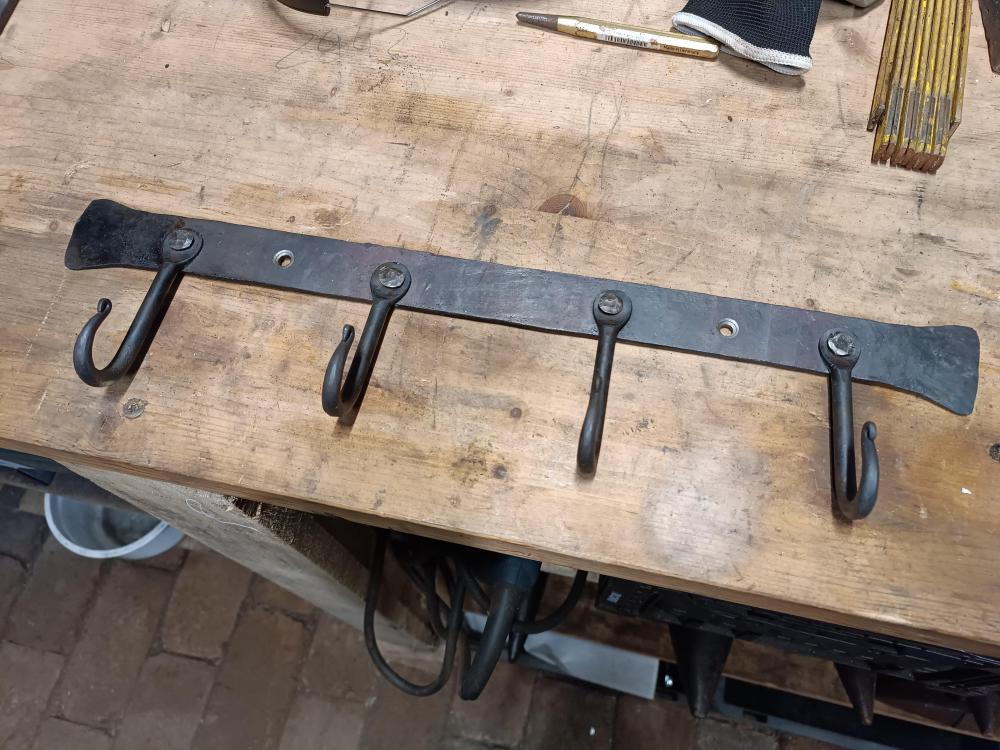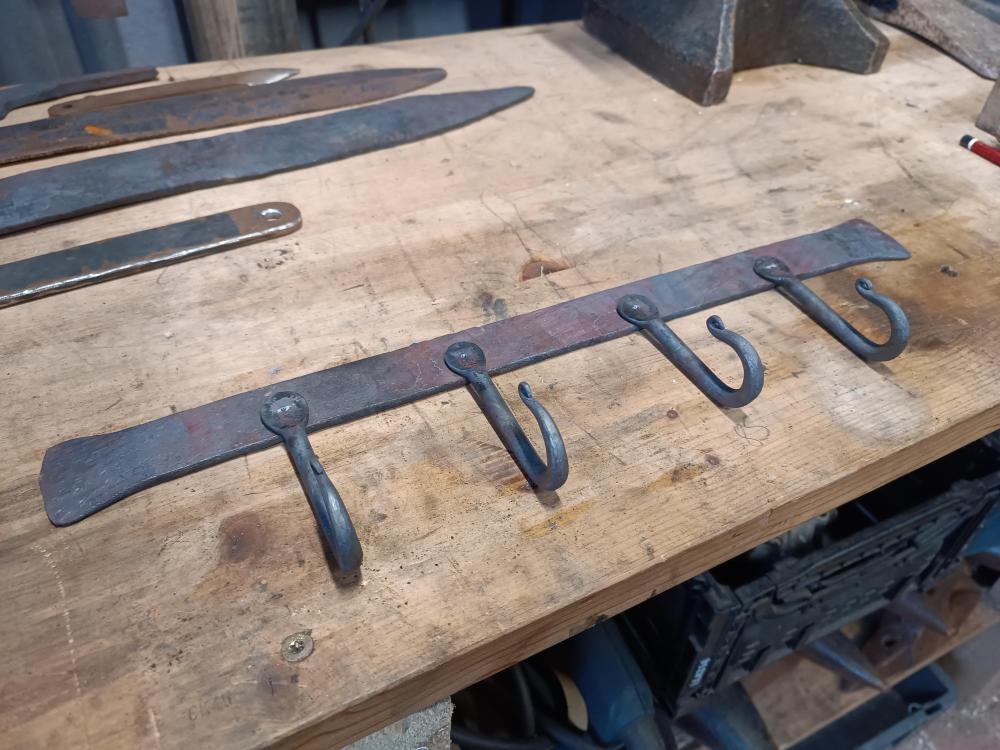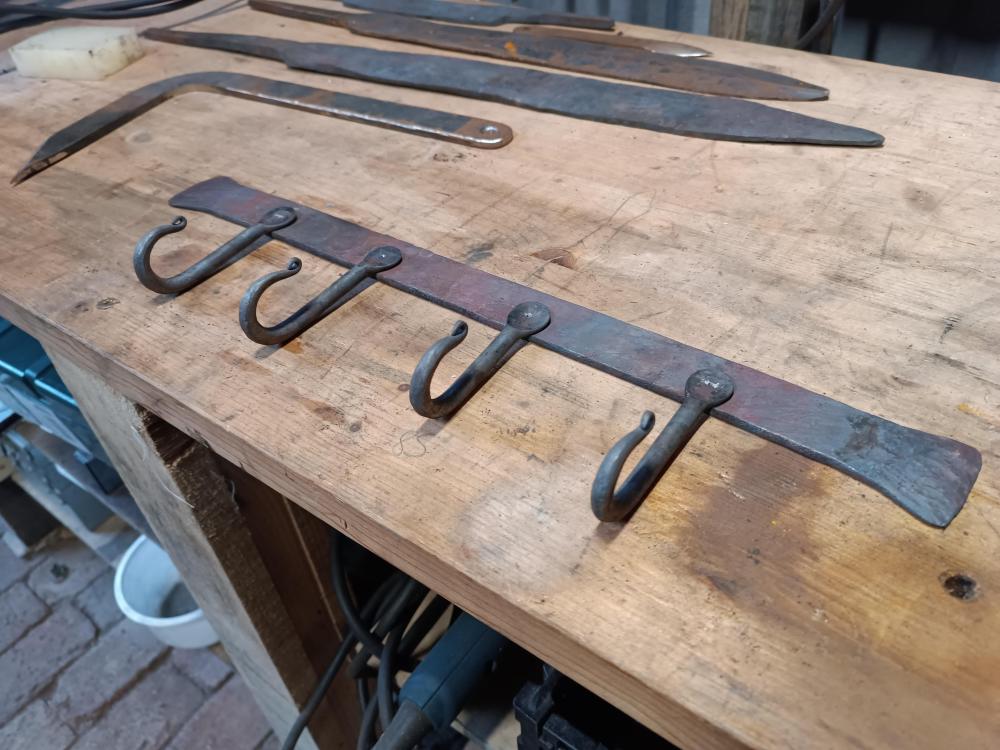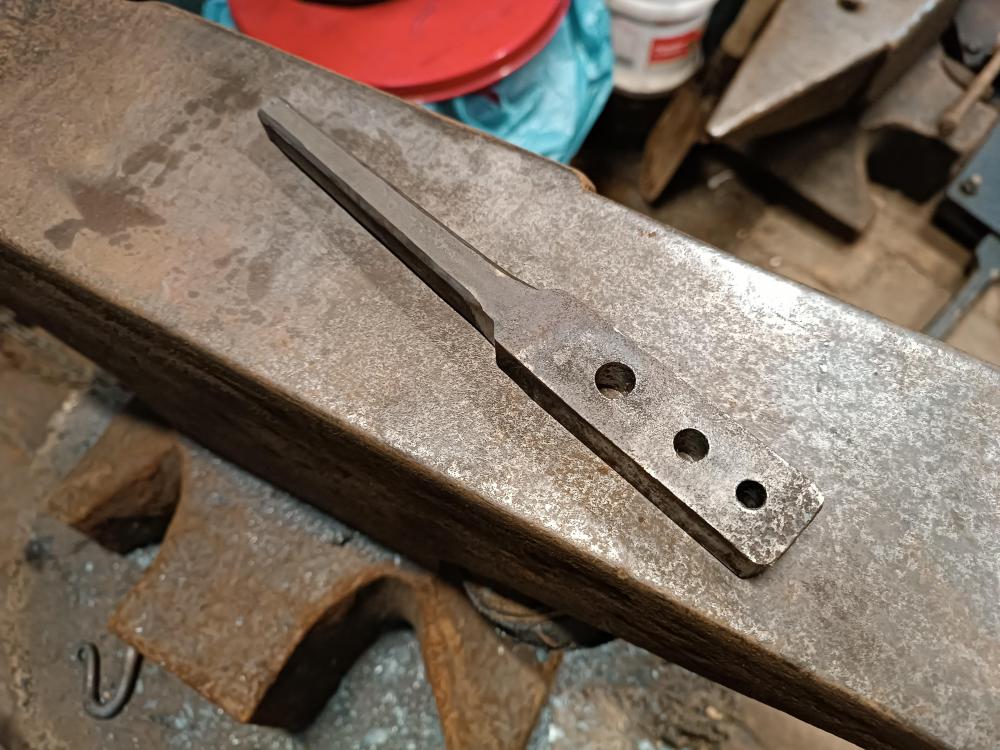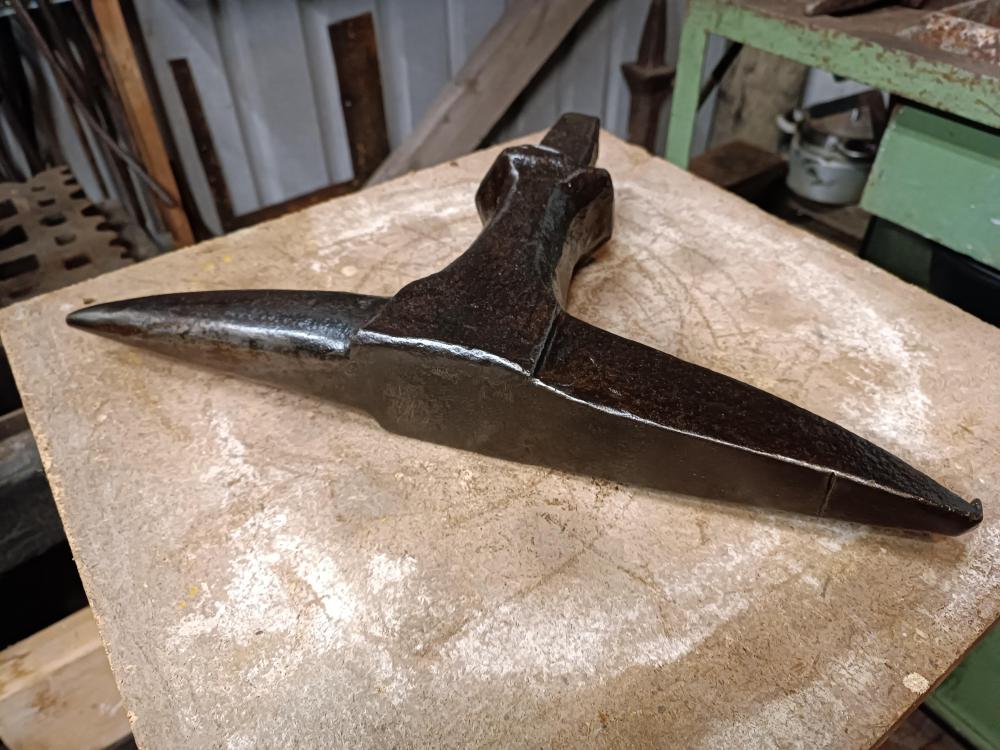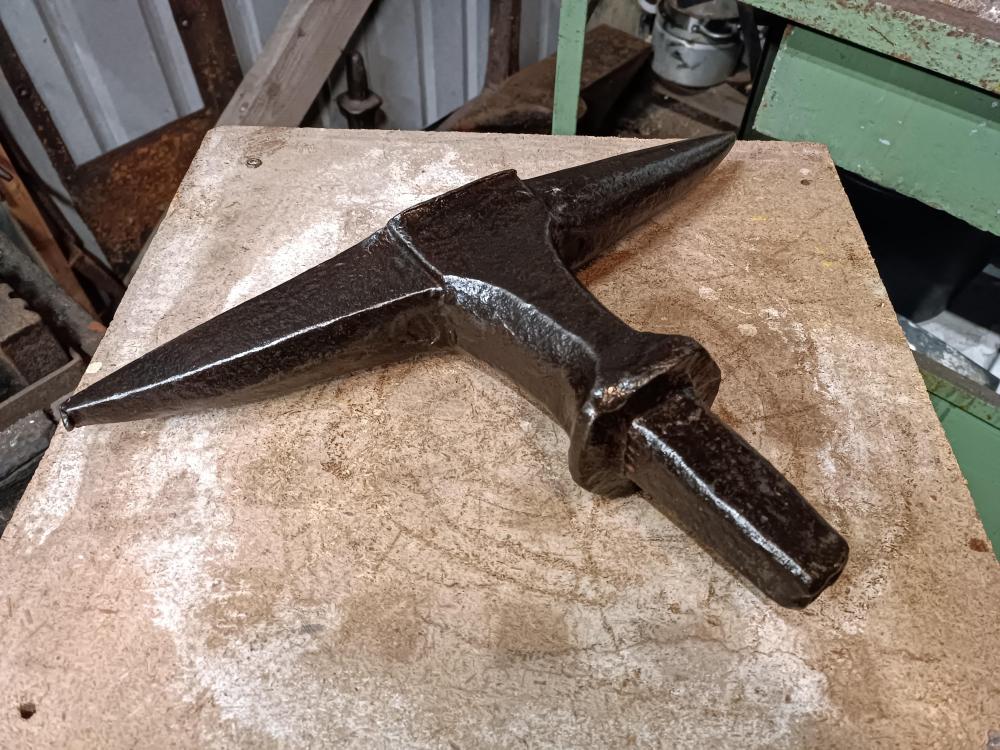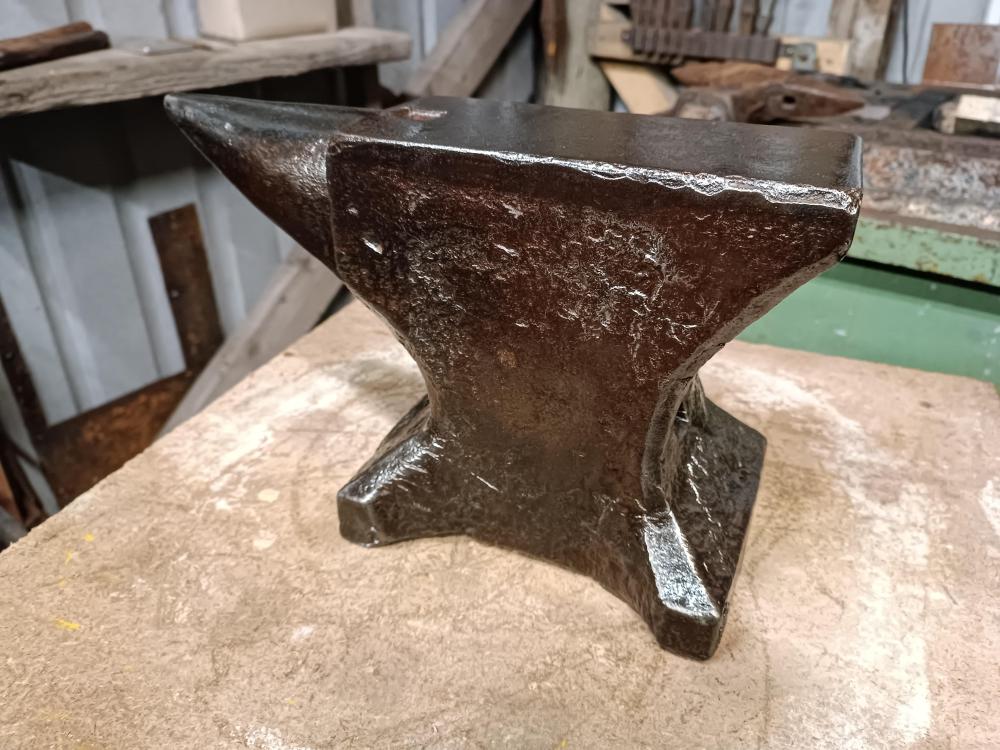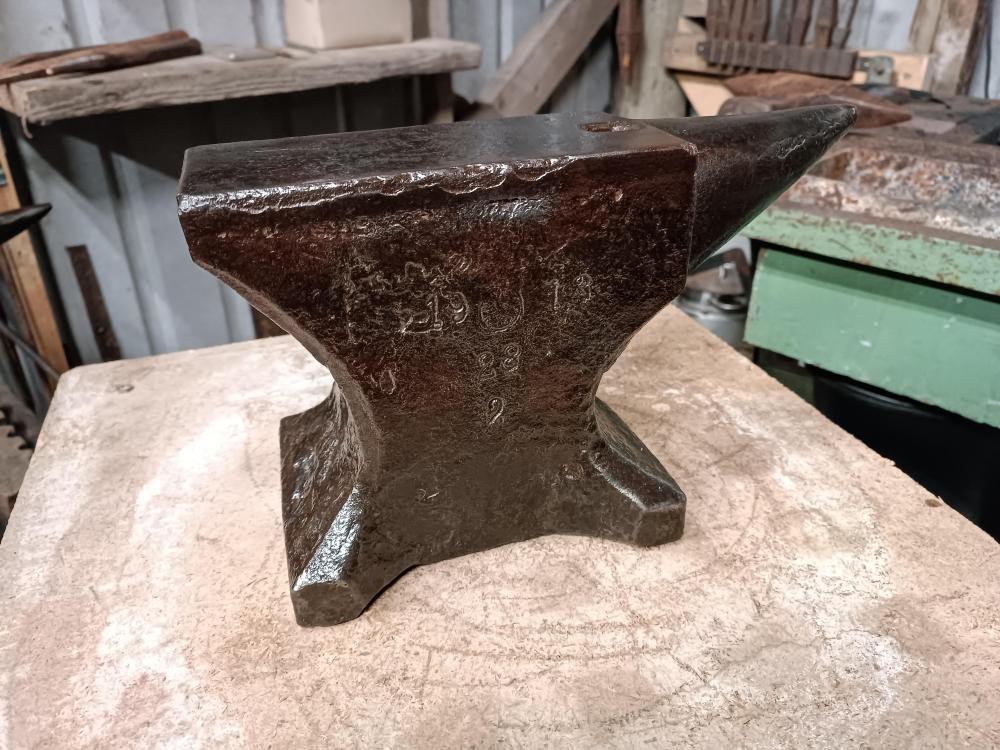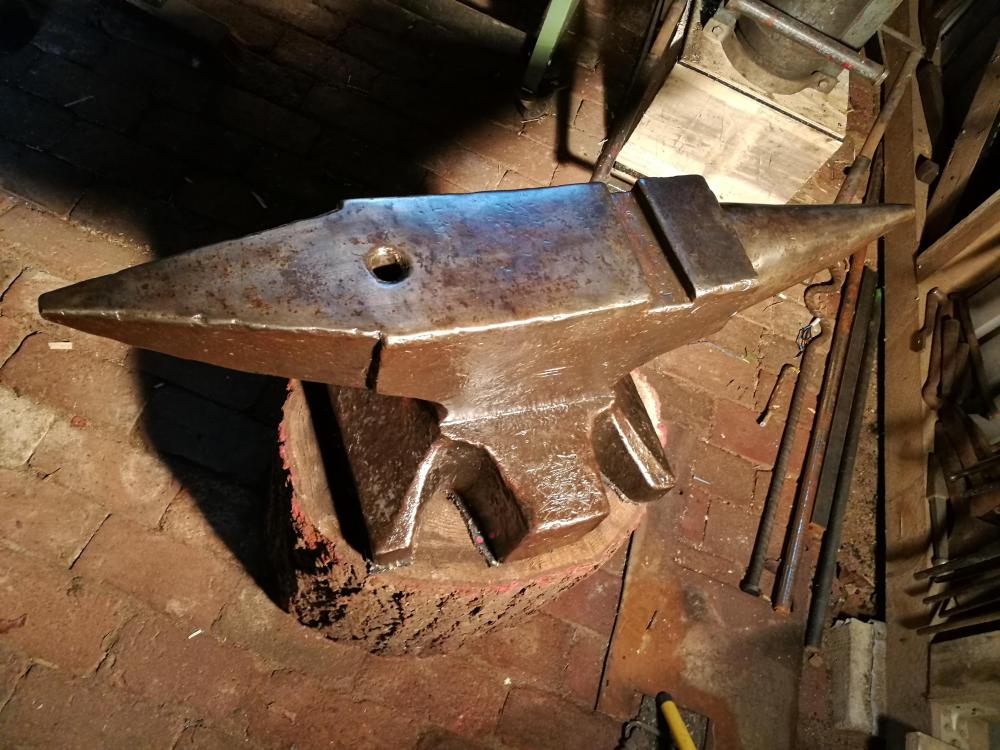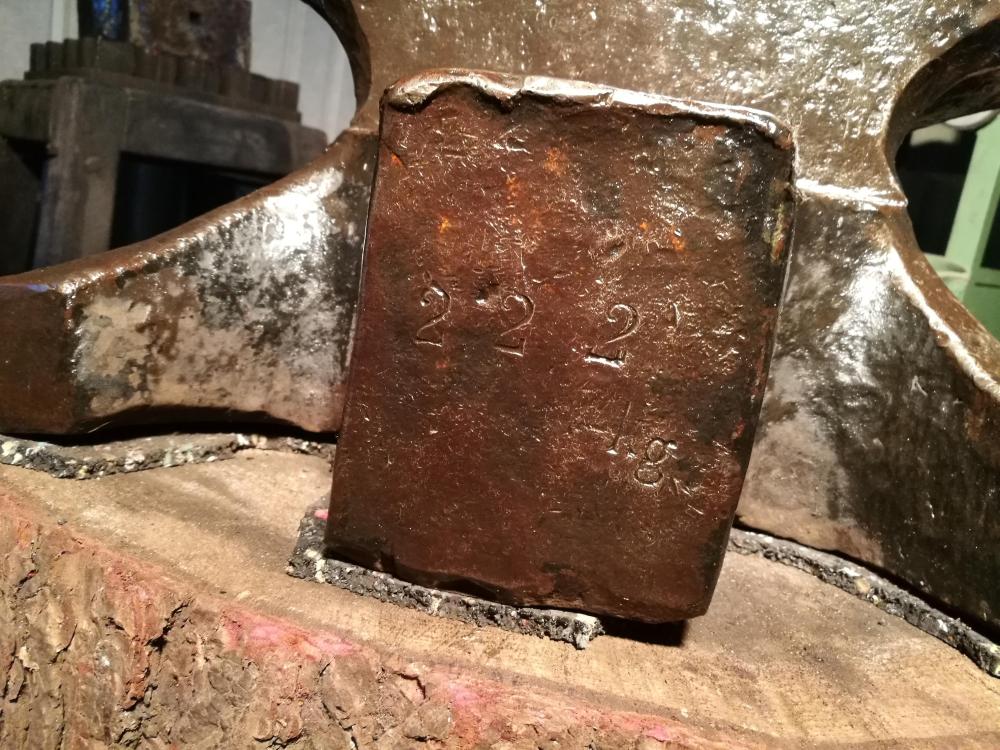-
Posts
75 -
Joined
-
Last visited
Content Type
Profiles
Forums
Articles
Gallery
Downloads
Events
Everything posted by Julianb
-
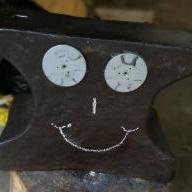
What did you do in the shop today?
Julianb replied to Mark Ling's topic in Blacksmithing, General Discussion
Billy, the boot scraper set in stone is a nice idea, I might steal that! Thanks in advance! Cheers! -
Interesting to see this pattern on a PFP anvil. You can clearly see the ground off flash residue below the horn, which also makes it identifiable as drop forged. Cheers!
-
I know, it still amazes me. And if people are willing to pay that, why not?
-
Hi! Nice anvil, could you post a picture of the makers mark and date? That'd be great! It is ridiculous to see the prices the "bigger" tools sellers on the various platforms are able to call up. I've seen anvils that have been up on the German small ads sides for around 300-500€ been offered up and sold for 2000$ in the US. But where there's a market... Cheers!
-
I’m afraid that won’t help us with determining the maker. Sorry I’m not of any more help here.
-
It was possible to order an anvil in almost any weight you wanted. The price differed according to the weight and if you'd want a pattern with distinct features like double-feet, a breast, upsetting block, etc. Some manufacturers, FWDS for example, offered such features only on anvils above 100kg. Which is most probably not a strict rule, if you paid for it, it wasn't impossible to do that. You could also order a pattern with an additional feature, that normally wouldn't be included, for example add double- or even triple- feet. As for your anvil, it is almost impossible to determine the maker, if there's no visible markings left. It could've been produced by anyone.
-
I do, what do you want to know?
-
Absolutely correct, but keep in mind that this FWDS catalogue is very crudely translated. Look at No. 46 for example, the word "Stauch" (upsetting block) is translated with "compression", which doesn't make any sense in this context, although "stauchen" means "to compress" in German.
-
Hello! First of all: Don't grind! If at all, I'd take a bit of sandpaper to the cuts to soften any sharper corners of the indents. What you have here is an anvil that comes closest to the so called "sächsische Form" (Saxony referring to the geographical region more than the present federal state), with double feet and a breast that doesn't have the smooth transition into the horn as for example the Southgerman or Bavarian patterns have. Those patterns don't mean anything concerning the region this anvil was actually manufactured in though. It can very well date back into the 19th century and probably does. It is a nice piece, have fun with it! Cheers! Julian
-

What did you do in the shop today?
Julianb replied to Mark Ling's topic in Blacksmithing, General Discussion
Interesting, thank you! I use a lot of previously rusted material, I'll try to compare it with some fresh steel sometime! -

What did you do in the shop today?
Julianb replied to Mark Ling's topic in Blacksmithing, General Discussion
Hello, I'll just squeeze in my finished hook rack in between all the great projects here. Coated in beeswax, I don't really like the reddish spots shimmering through, but stuff needed to be hung... Cheers! Julian -

What did you do in the shop today?
Julianb replied to Mark Ling's topic in Blacksmithing, General Discussion
Hello! I thought I'd just throw a few pictures in between all the really enjoyable to see pieces here. To practice forging uniform pieces of the same shape, I attempted a small hook rack. The hooks are made from 8mm round mild steel, the plate is some old wagon wheel rim. The riveting is still to be done. To be able to make rivets from small round stock, I practices with the power hammer a little, drew out a small piece of mild steel. I drilled the holes to try out the automatic feed of the drill press. Cheers! Julian -
Hello! This channel is a goldmine for images of traditional trades of the "Rheinland". There's more interesting stuff about the iron industry, here's just a few: There's a lot more related stuff, like the making of large grindstones, etc. Cheers! Julian
-
Hi, as a historian, I'd really like such a thread! Cheers! Julian
-

What did you do in the shop today?
Julianb replied to Mark Ling's topic in Blacksmithing, General Discussion
Hello! As it is currently around 0°C in my unheated shop and the fire alone doesn't warm up the machinery and tools enough to forge, I thought I'd tackle the cleanup of multiple anvils, that need derusting and oiling up... I started with a stake and finished with a smaller anvil by H.P. Winterhoff: Cheers! -

North german identification
Julianb replied to estland's topic in Anvils, Swage Blocks, and Mandrels
Hello! The number 9 pattern is correct, but what makes you think it is a Refflinghaus anvil? Do you mean August Refflinghaus or Gustav (later Ernst) Refflinghaus? The former usually punched in a makers mark (circle with the letters A R S M, for "August Refflinghaus Söhne [Sons] Milspe [the location]", sometimes including the fire number inside the smaller inner circle), also they punched in "kg" for kilograms behind the weight numbers most of the time, though not always. Without any destinctive makers mark, we'll never be able to say for sure, we could only narrow it down comparing the different styles and fonds of the markings we see. The number 009 could refer to the pattern 9 or the forge fire, although I think that's unlikely, why would they punch in the zeros? It is also in a different style/font, so it might be added later by the shop that put the anvil to use, as an inventory number or something. Concerning the age, I'd put it somewhere between the 1890s and 1960s. I hope that helps a little! Cheers! -
Hi! That's a good looking result, I need to try electrolysis myself some time! No idea about the maker though, but I can't really make out every letter. It is a little more difficult to find out the manufacturer of vices though, as they were produced by a whole lot more toolmakers. They might have even been marked with a resellers name or the name of the company/ person that used it. I have a similar vice with a name stamped in, but I cannot for the life of it find out more about it... Cheers!
-

JLP Blacksmith Teaching Center.
Julianb replied to jlpservicesinc's topic in Building, Designing a Shop
Hi! I've been following this thread since I joined the forums and just wanted to say how awed I am by this amazing work that is displayed here. Really, really impressive and interesting to watch! Cheers! Julian -
Hi! That is not an easily answered question and it definitely differs between the manufactureres and time frames. I might be able to offer some insights concerning German anvil makers and will concentrate on the time period from around 1850 to 1920, as I have an actual basis of sources for it. The chosen period is quite long and there have been different methods of steelmaking utilized during those years. As my english vocabulary is not up to standard on the scientific terms for each of those methods, I'll ignore those for now, but it is important to know, that there are different methods of production, that lead to the product we now generalized call wrought iron (the same goes for steel). In addition to that, the definiton of iron and steel was not exactly the same as ours today. To get specific now: The very widely known anvil maker Söding & Halbach used iron and steel from at least two different production methods during the years of 1850-1870 alone. They refined crude iron and english cast iron and from the 1870s onward worked closely with a local steelworks and utilized crucible steel, made with different methods. In comparison to that, the not so widely known maker Hermann Kuhler from Remscheid is said to have shut down its last own puddle iron production in the 1930s. At that time the method of puddling was long out of date. I know it is just one example and anvils with their way of manufacturing are rather special, but maybe it helps a little. Cheers! Julian
-
Hello! Nice find! I would put it into the timeframe of about late 19th to early 20th century. No idea who made it though, without any specific makers marks present. The markings on the side, "K (#?) 101" could point to a maker, but only one letter is not as common as a pair of letters. I don't know yet, if I'd tend to identify those kinds of markings as makers marks or some kind of sequential serial numbers. There are arguments for both, but nothing confirmed by hard evidence (yet, maybe never). Cheers! Julian
-
Hello! The smaller vices are not meant to be used as a post-vice to hammer on. They are more of a general metalworkers vice. The German term would be "Schlosserschraubstock", Schlosser originally meaning locksmith, but the profession of general metalworkers is called Schlosser as well. Those vices have been made with legs of different length, but they are meant to be fastened to a workbench etc. like this. This is usually not a modification. There are also post-vices to be used as a blacksmithing vice to hammer onto, which are then called "Schmiedeschraubstock" (Blacksmiths vice) or "Feuerschraubstock" (Fire vice). They usually are available with wider jaws than the short-legged ones. I'd love to upload historical tool-catalogues as a source here, but I do not own the rights to those pictures. If I ever find some originals to own by myself, I hopefully remember this thread here. Cheers! Julian
-

Rebar crossbow??
Julianb replied to SubterraneanFireForge's topic in Blacksmithing, General Discussion
Hello, and please be careful with steel that came from used car springs in parts with such a vital function, like the arm of a crossbow. You do not want a previously damaged piece of steel fail in exactly the wrong moment. Stress-related microfractures don't repair themselves by reforging the spring. Cheers and good luck! Julian -
Great, thanks! You can clearly see the capital K and lower case g. Also noteworthy: The number of the fire, marked with a capital N and small but underlined o, followed by a large number. If nothing else is visible, you can identify Krägeloh anvils by the fire number stamp. Cheers! Julian
-
I'm afraid that the picture opens only really small and I cannot make out any kind of marking. Larger and clear pictures of the anvil would be really appreciated! Krägeloh usually stamped the number of the fire in which the anvil was forged onto the piece as well. Their weight stamp also seemed to consist of a number and then "Kg", with a capital K and lower case g. Please be careful though, all my statements are based on ongoing research and are still not yet founded on a broad enough basis of scientific evaluation. There might be deviations in or changes from their "standard" procedure.
-
Yes, it is clearly forged and a North German pattern. That puts it in the ballpark of at least the first half of the 20th century. After the second world war, there remained only very few manufacturers of forged anvils. F.W. Krägeloh was one of them, but I don't know, if they ever stopped putting their markings on anvils or if they changed the lettering at some point. If you've got a "kg" marking, then it is probably not Krägeloh and might be pre WW2. But it is really difficult to say, as there were dozens of anvil manufacturers around and only a few famous/ larger ones are still known or identifiable by their markings. And again I doublepost, hopefully it combines the posts automatically again. That's an anvil I own, no other markings than the weight. Does your "kg" marking look similar? Or is it in a different lettering or in capital letters?

